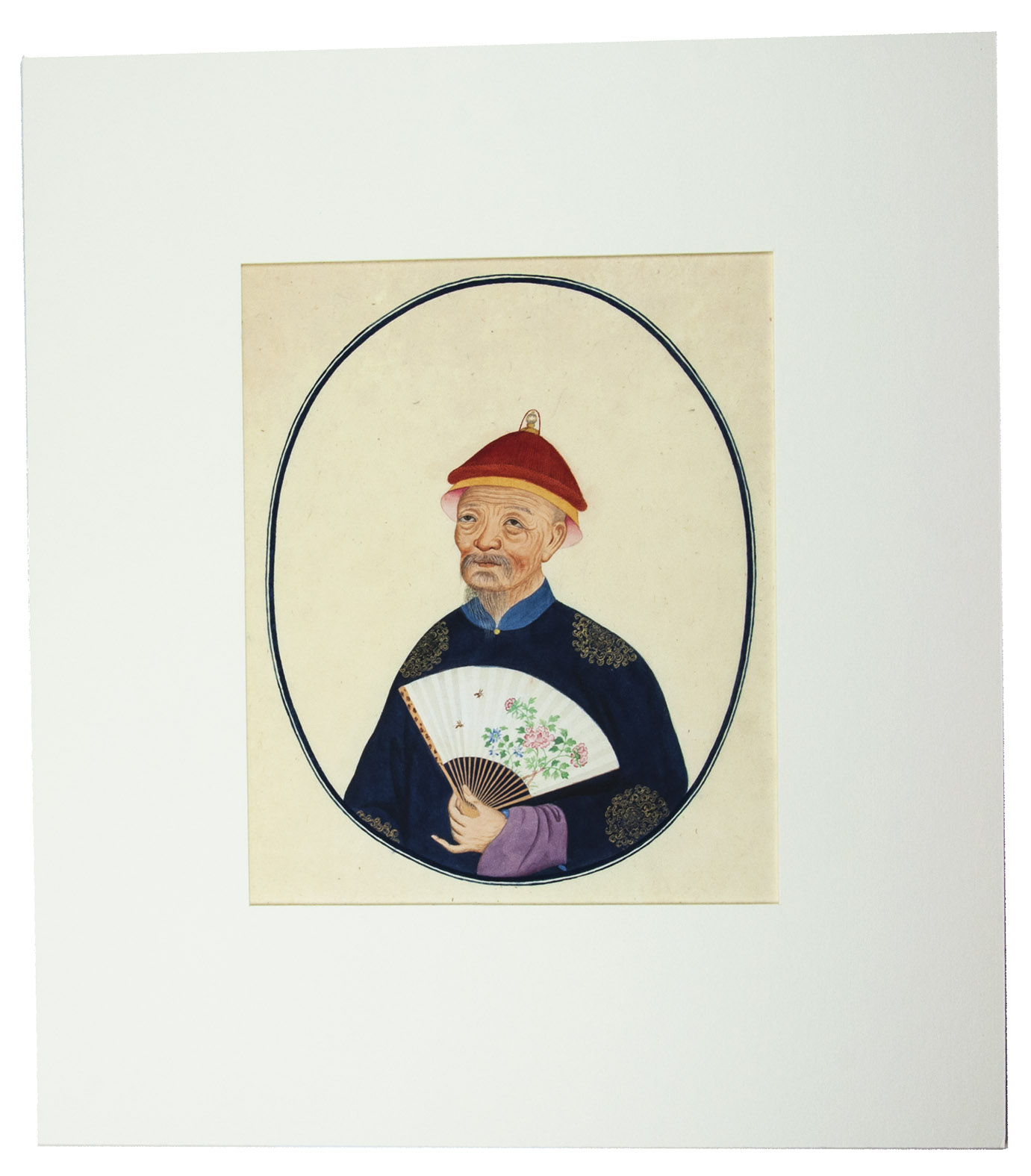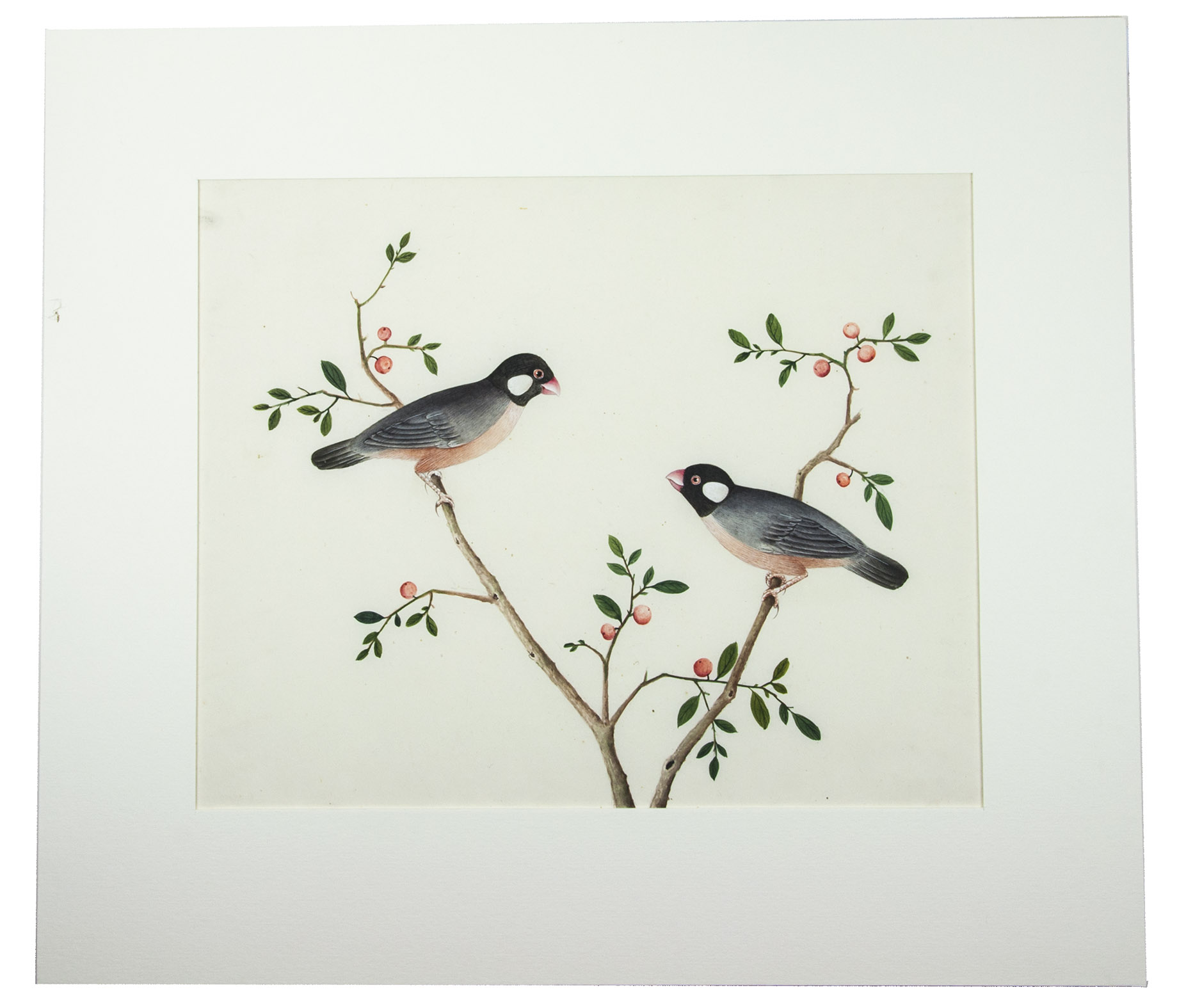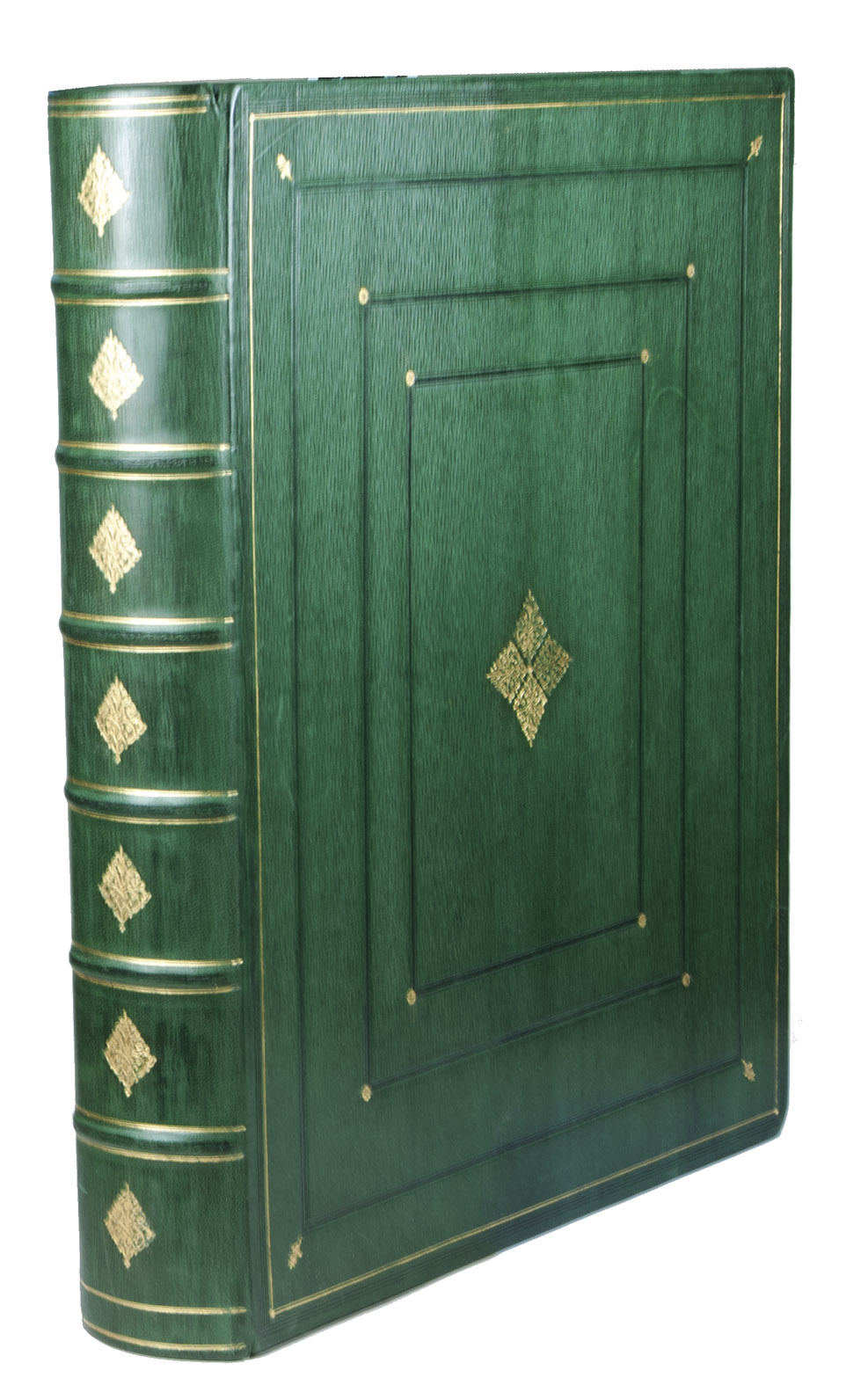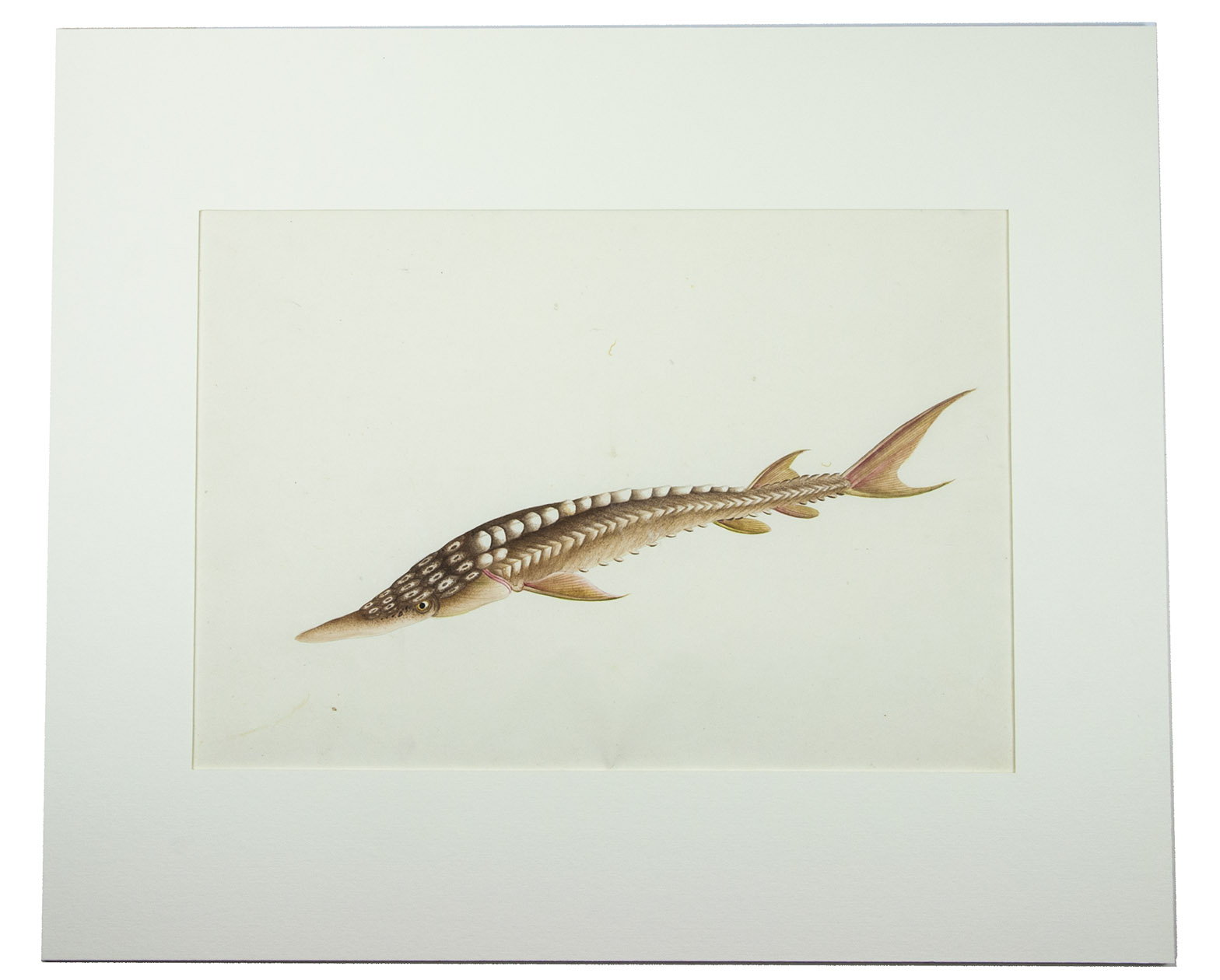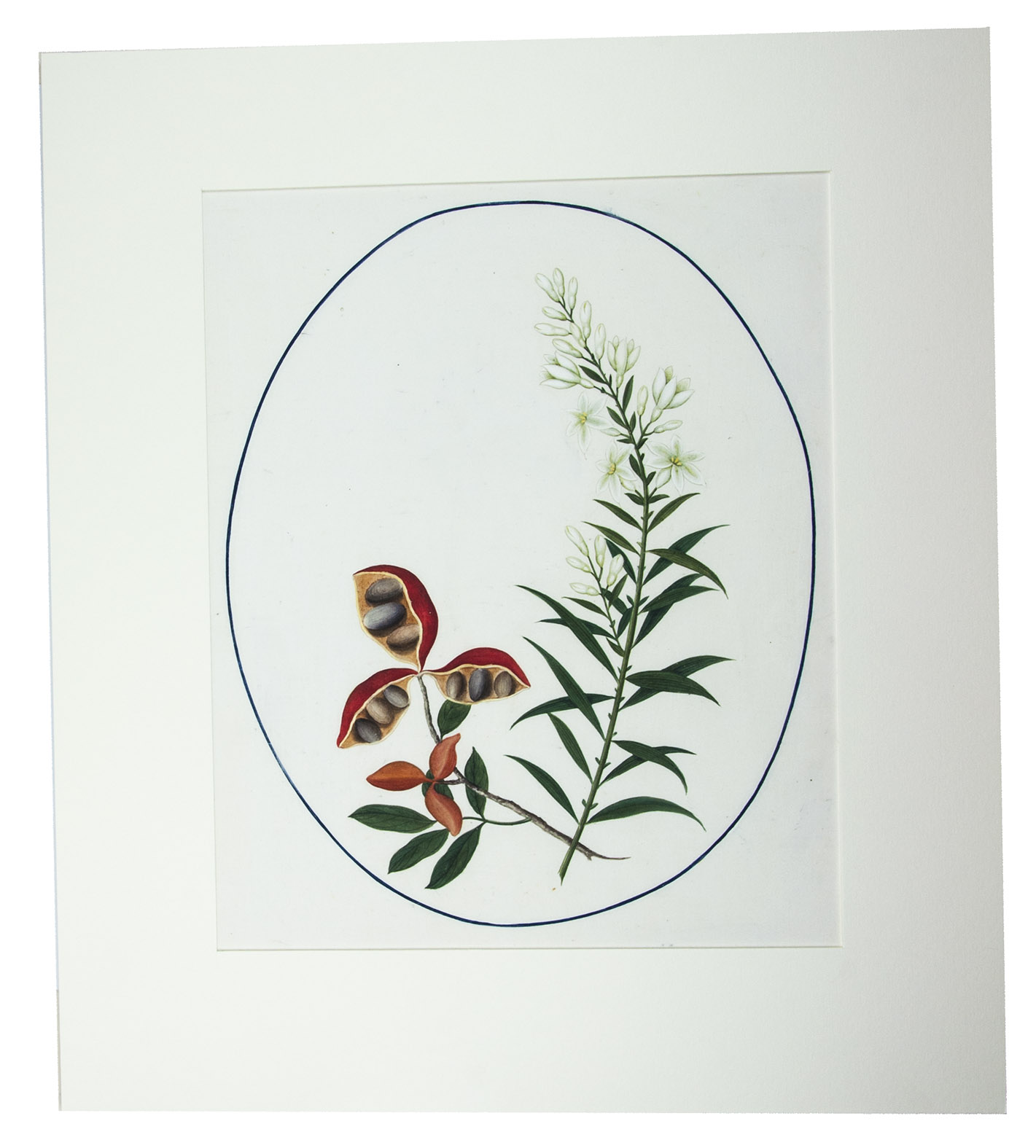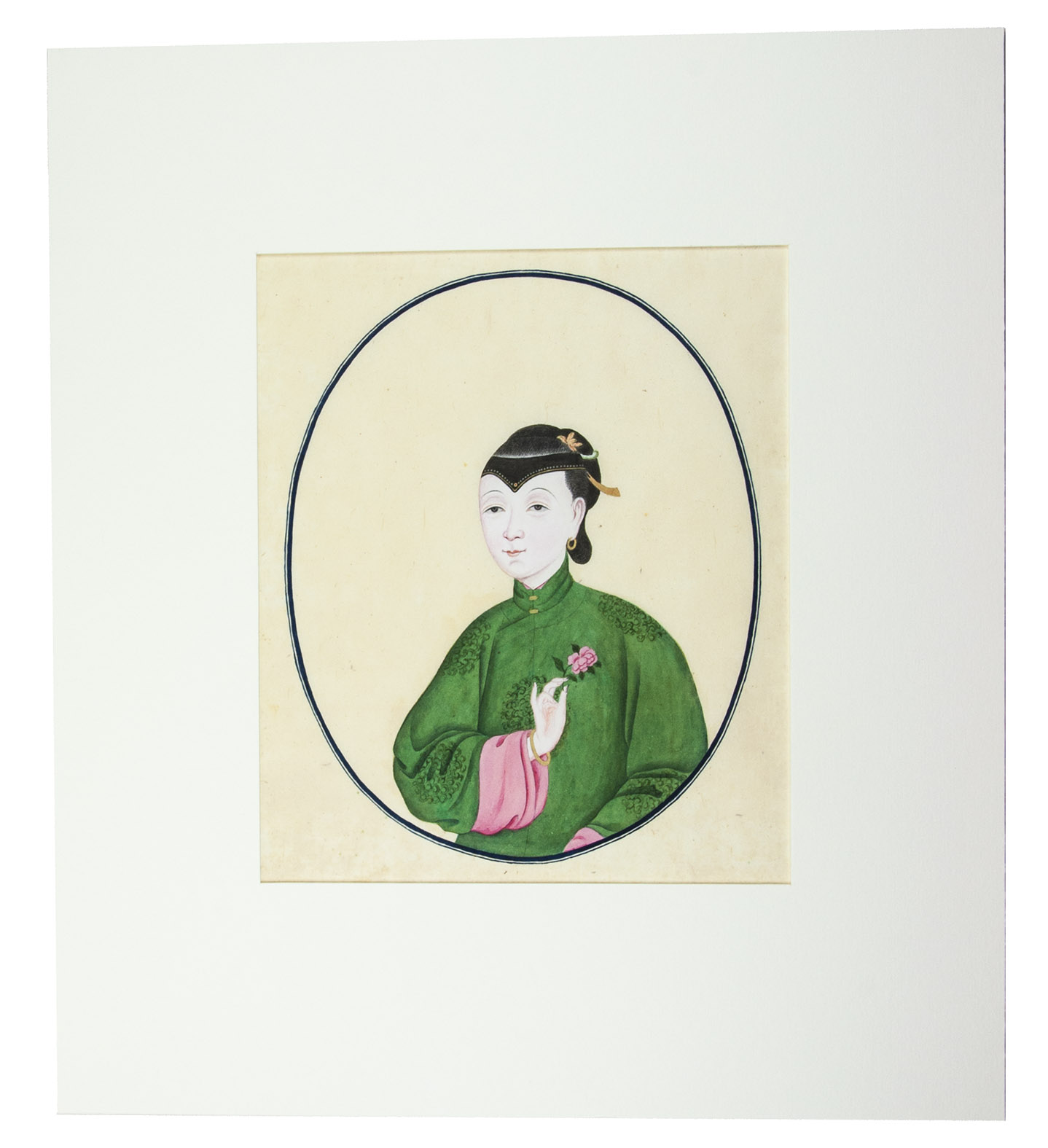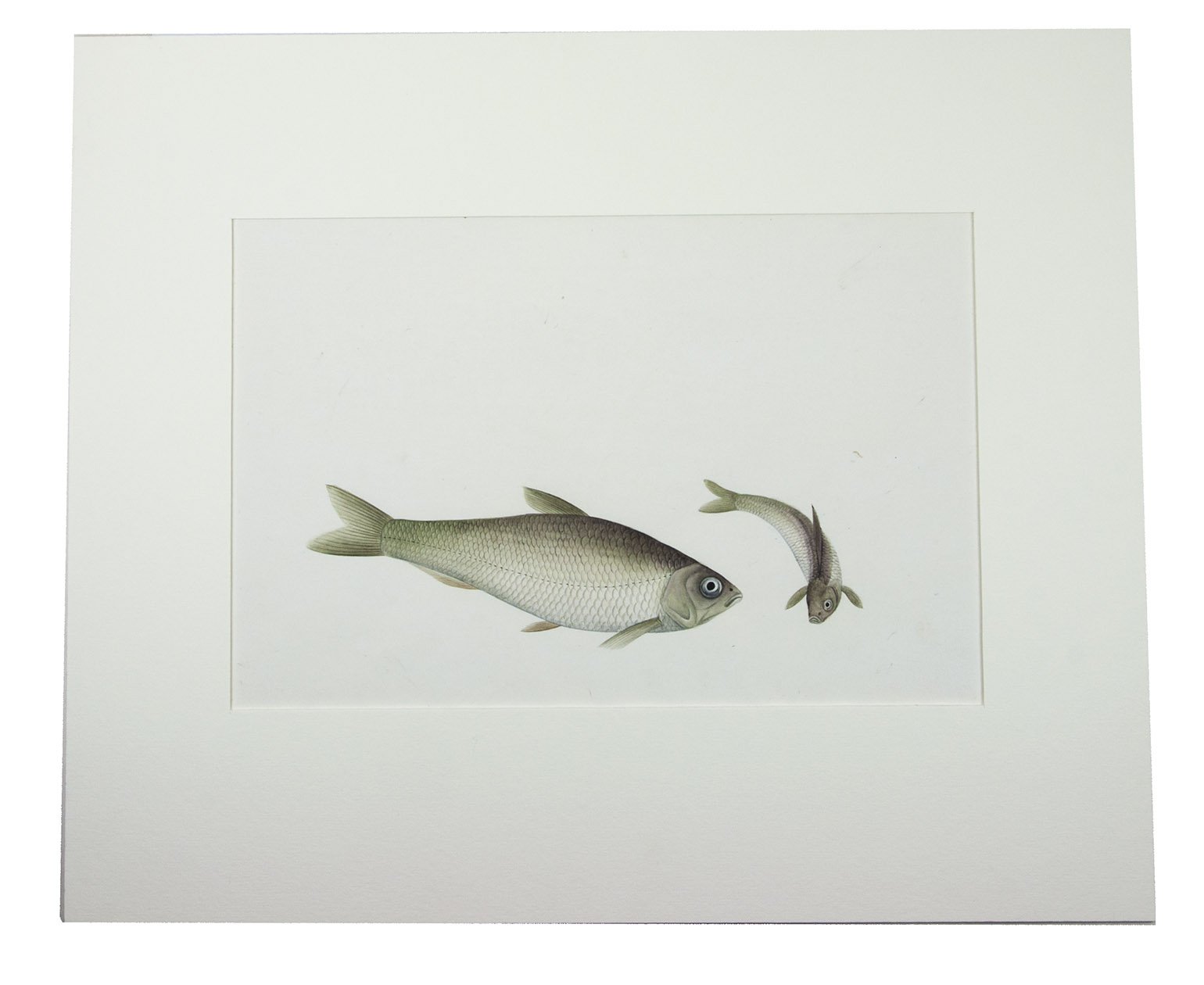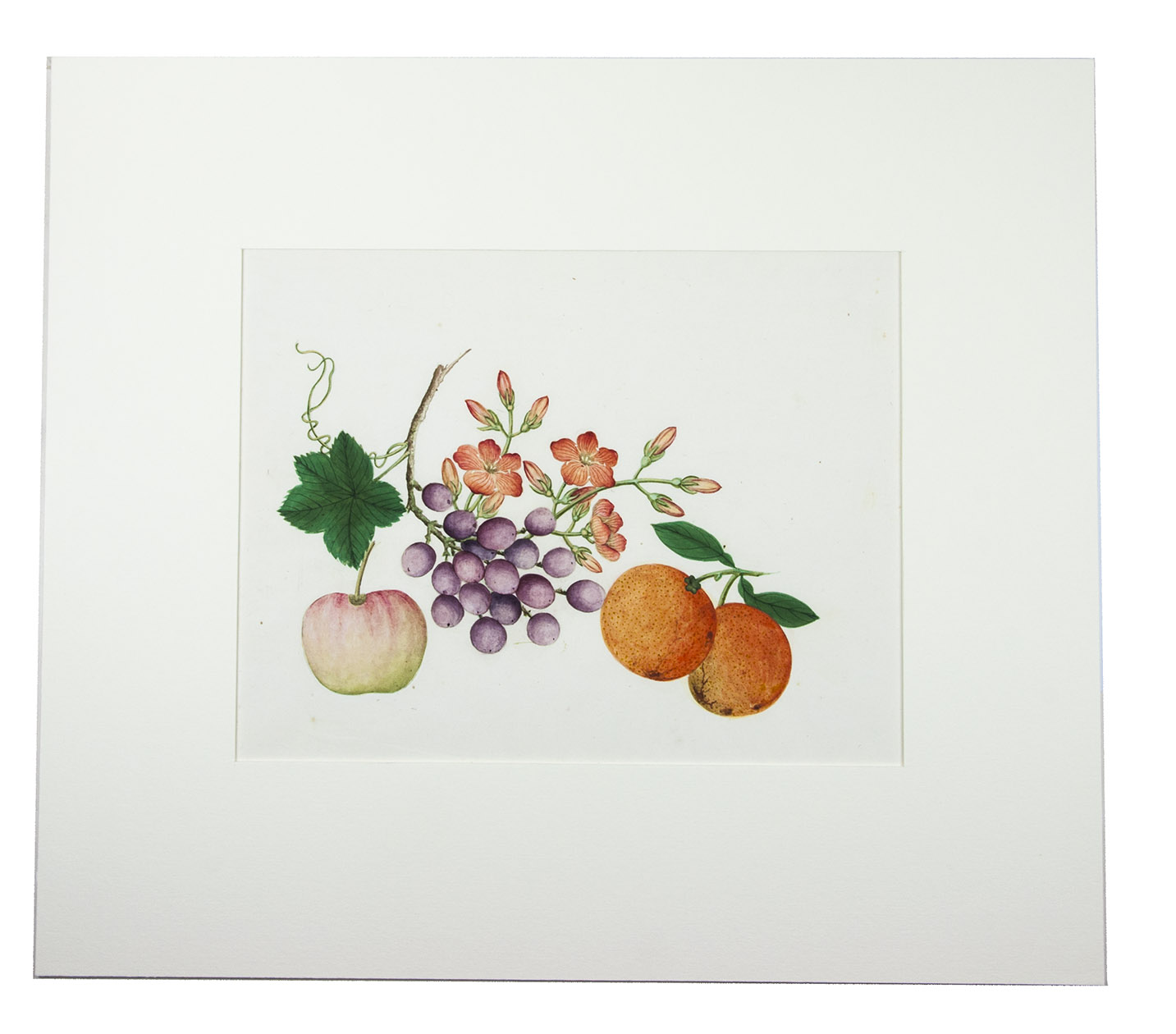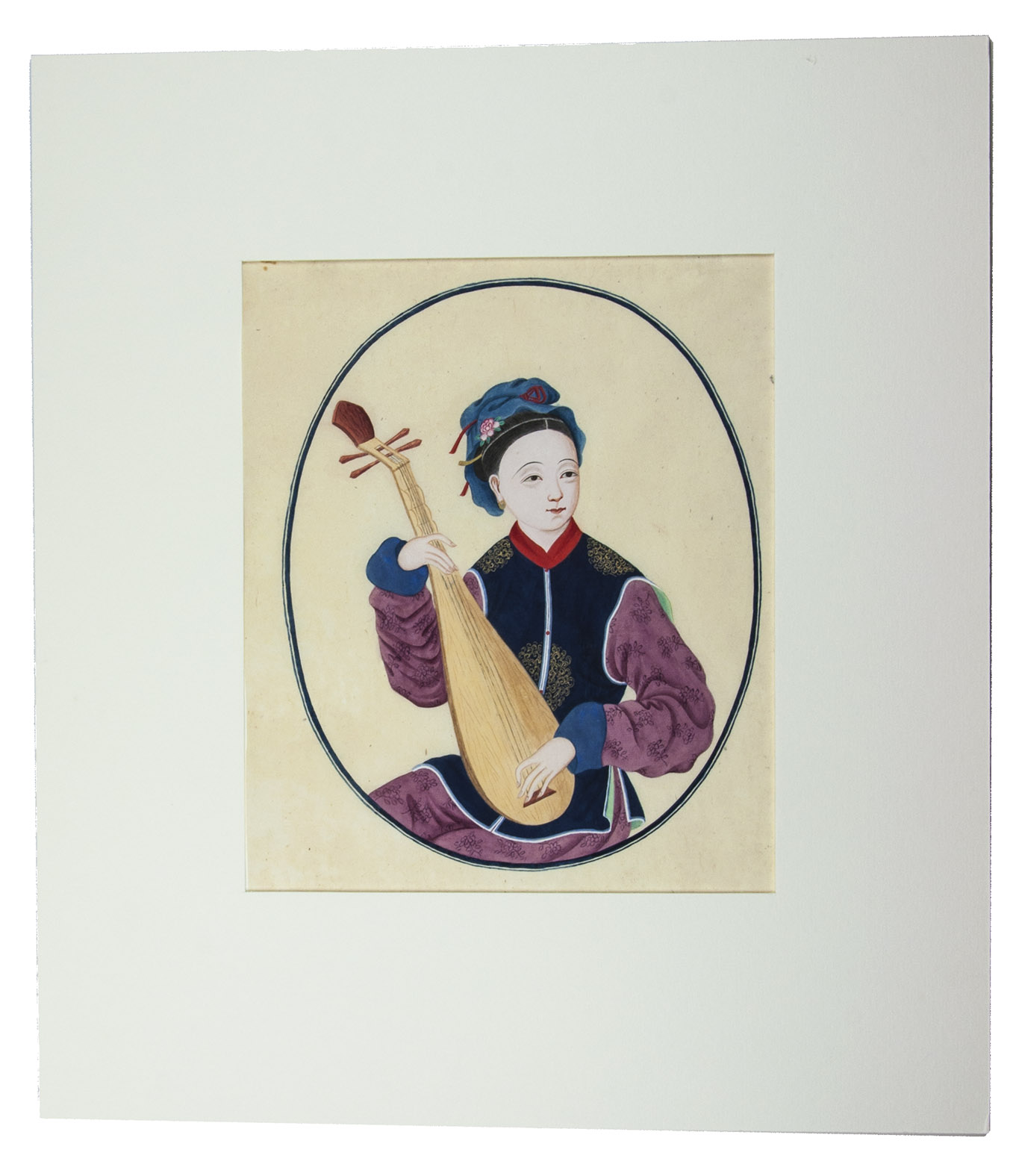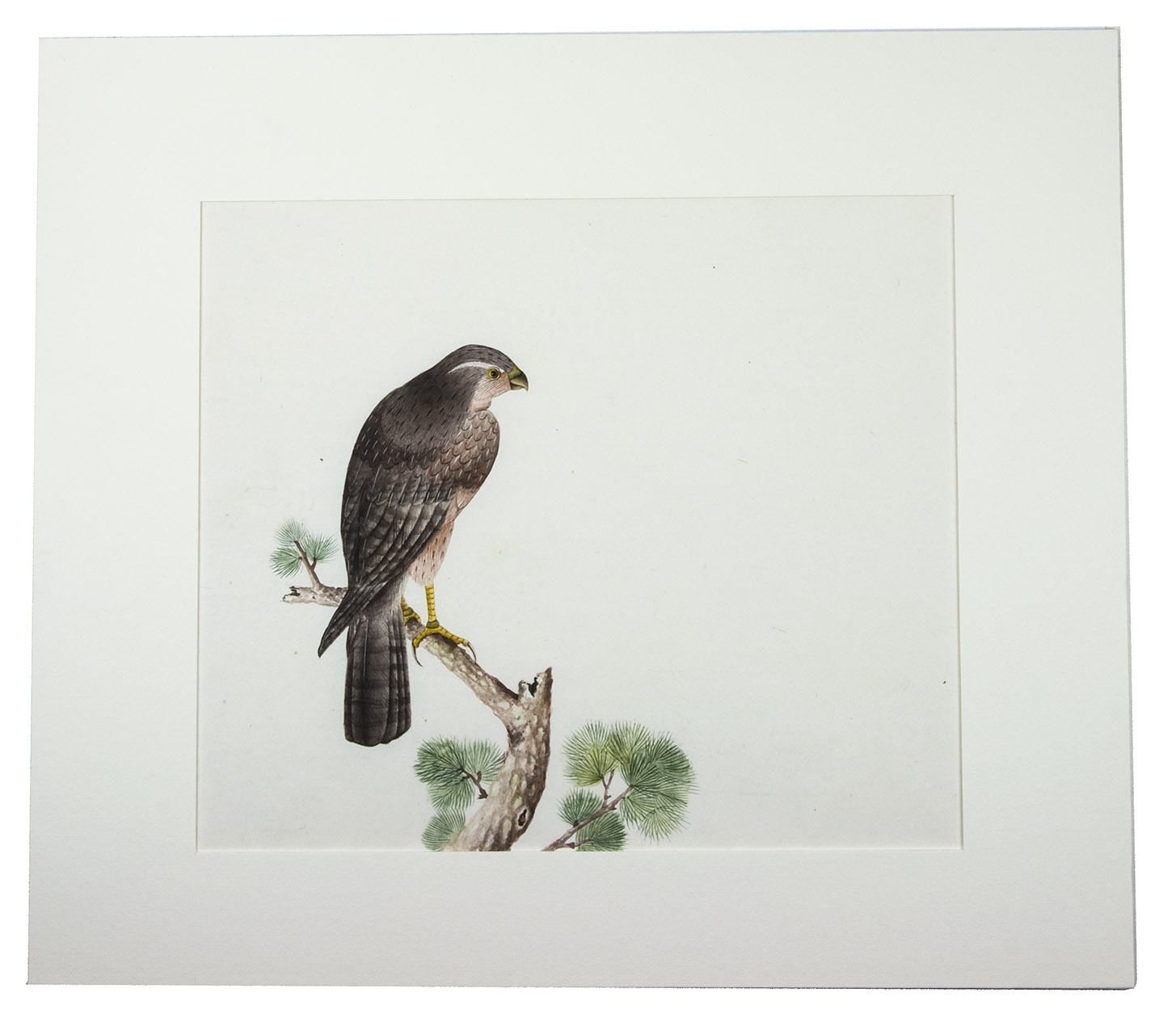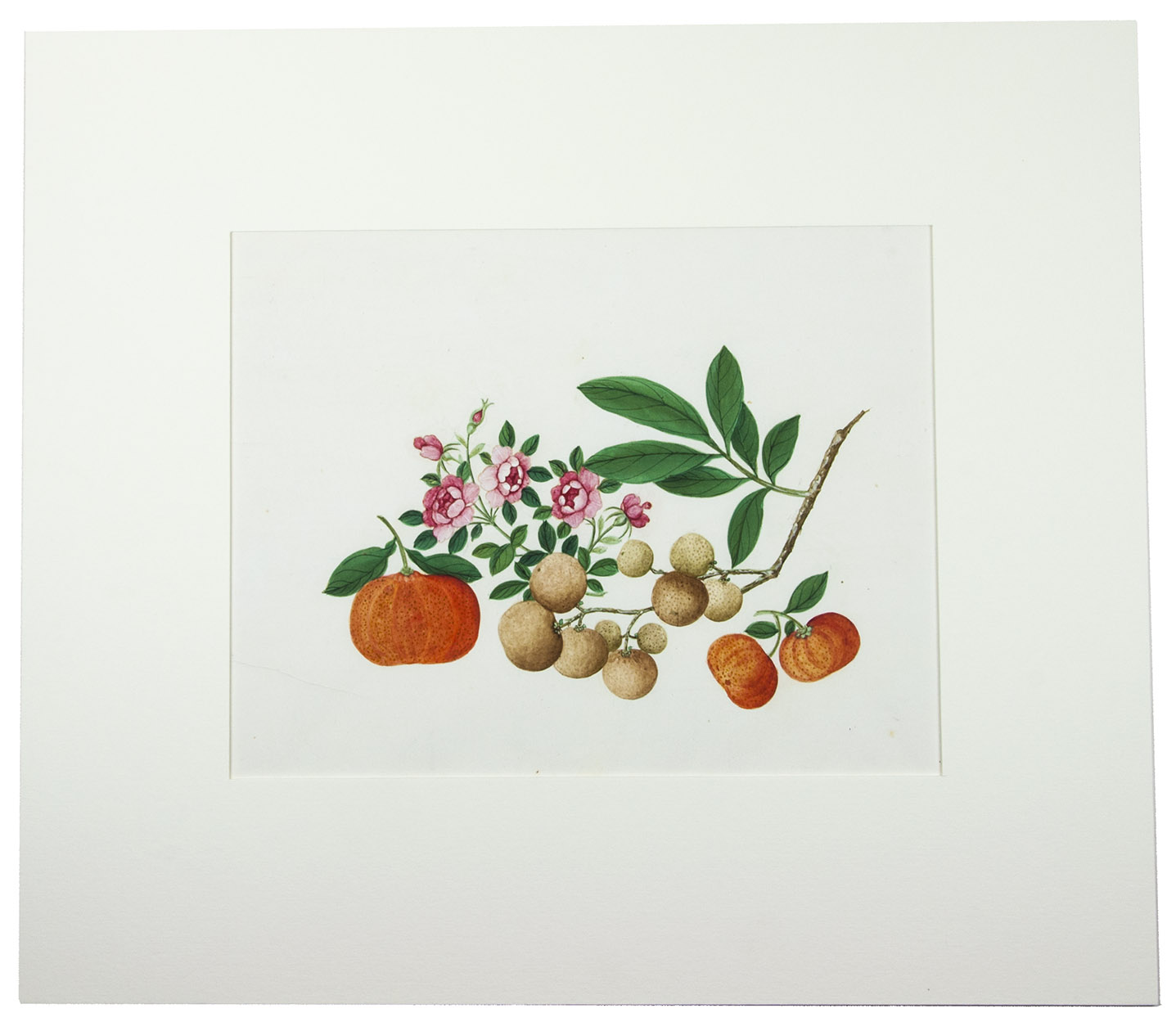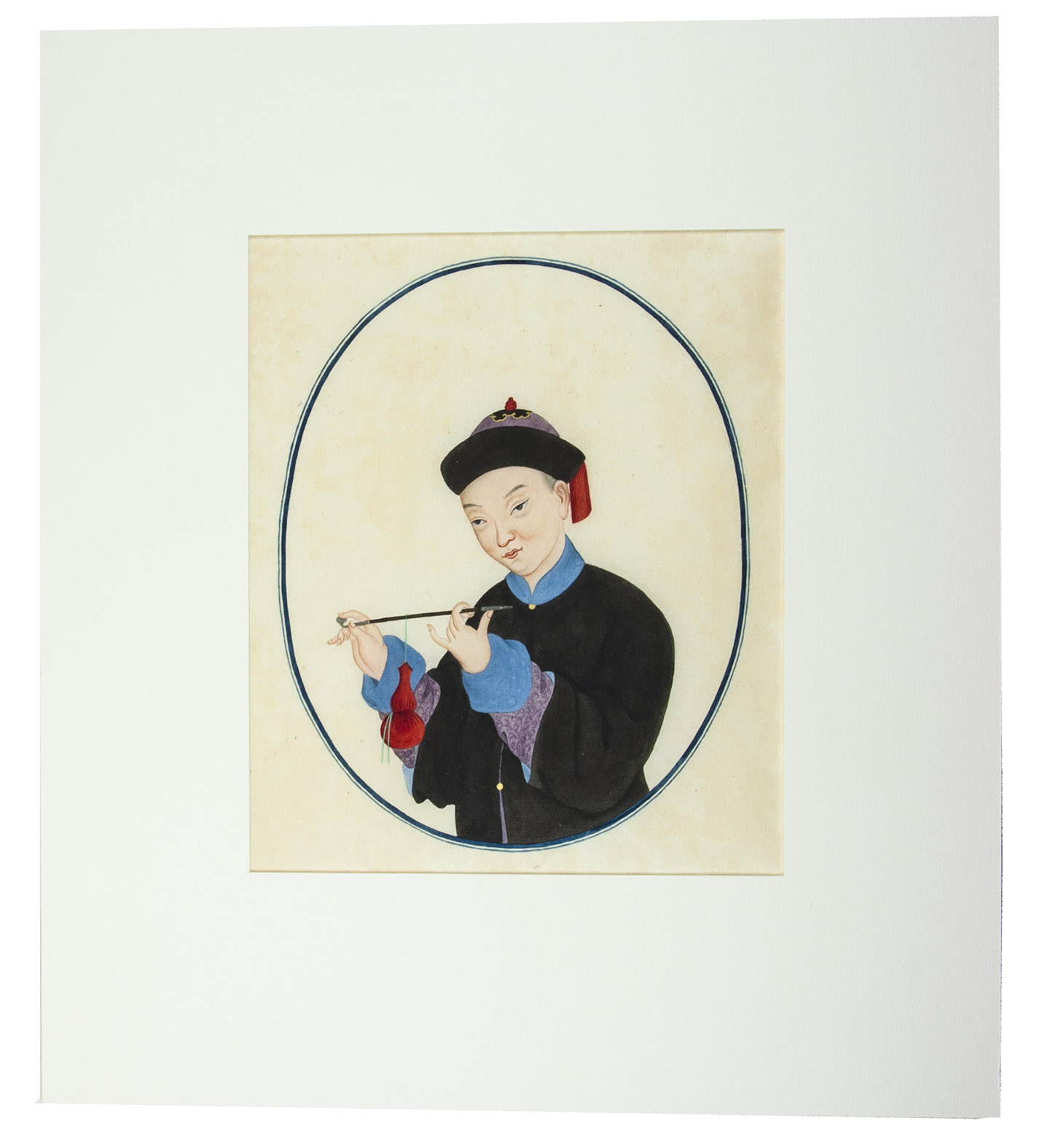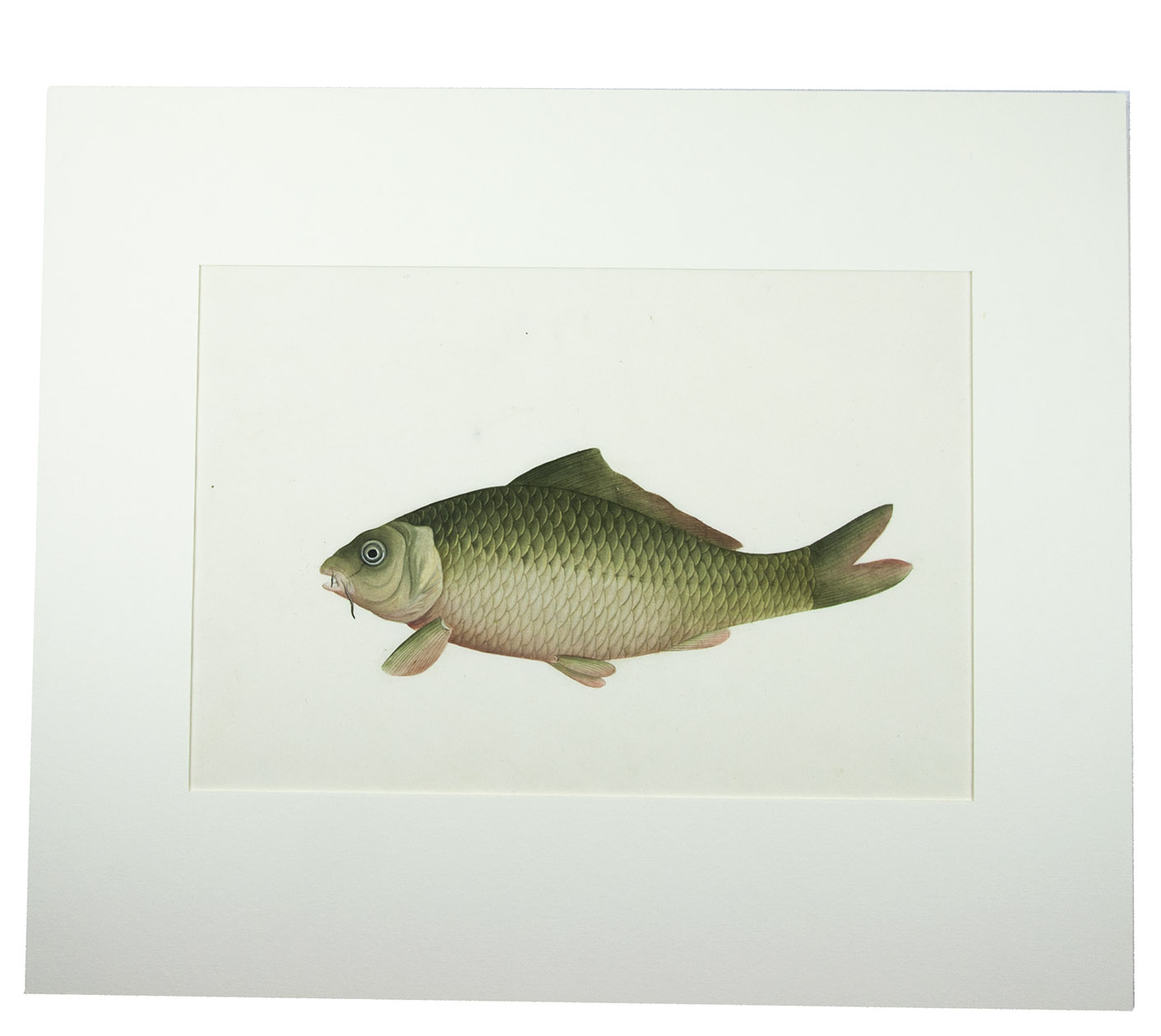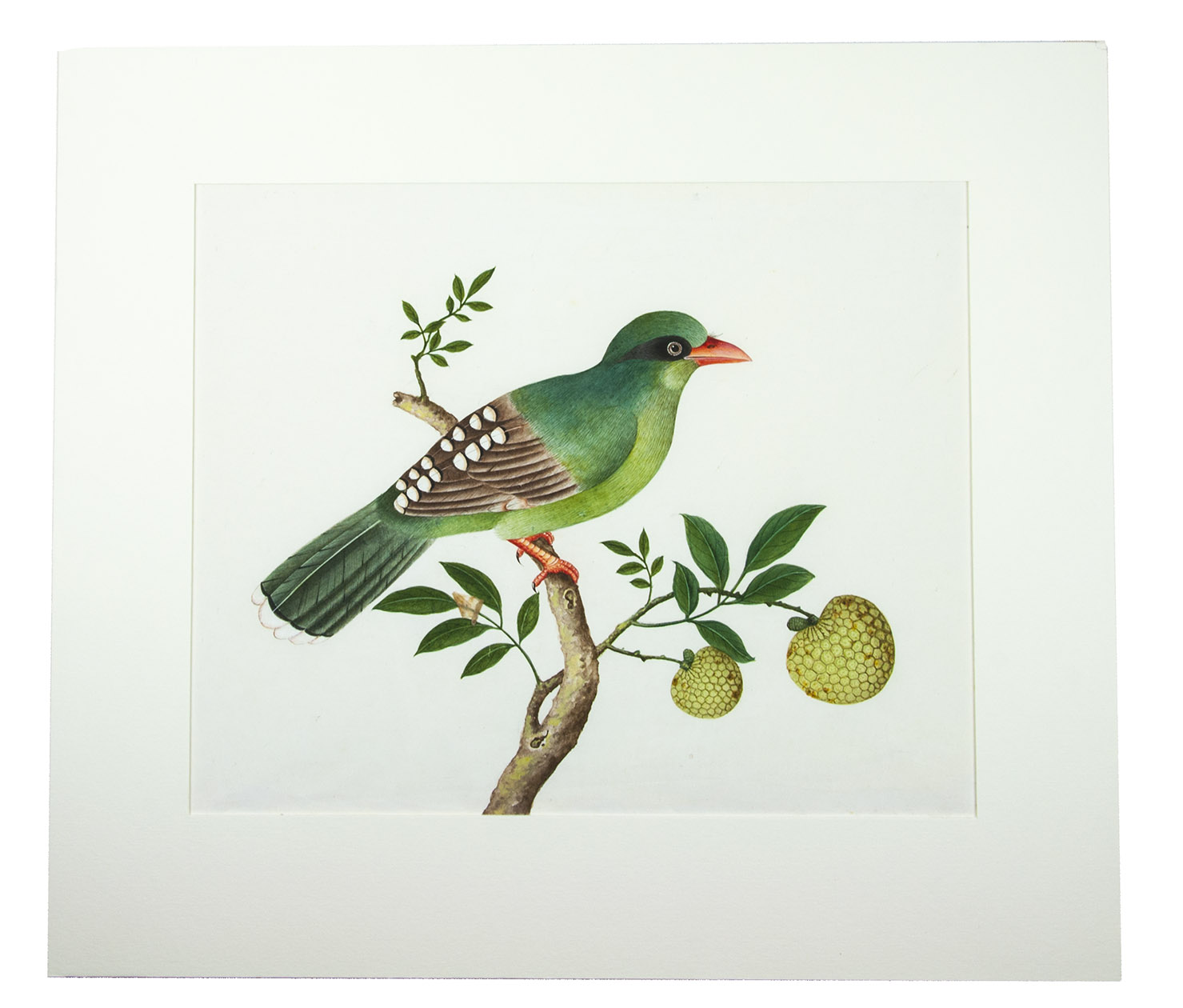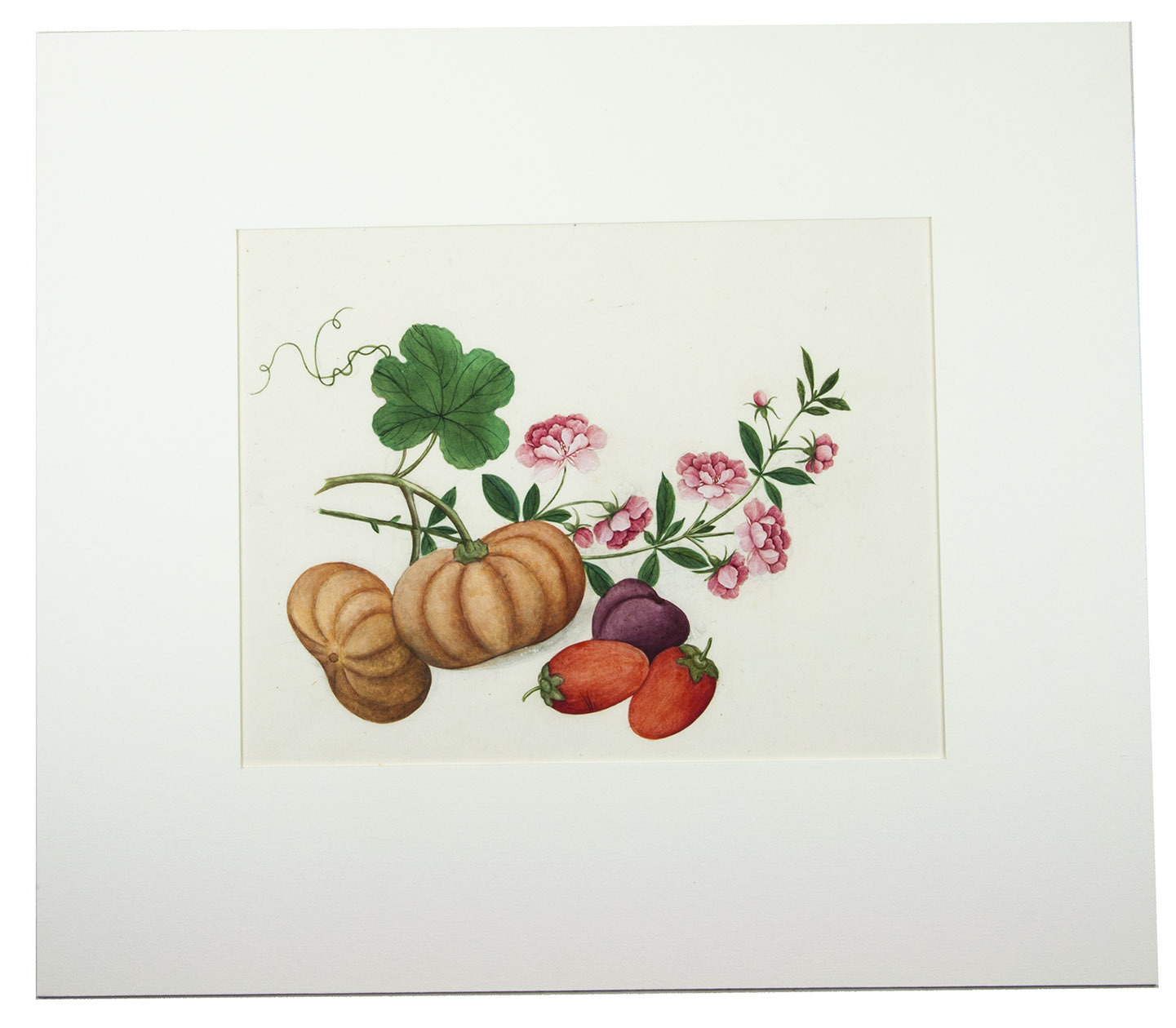[CHINA - WATERCOLOUR].
[17 Chinese watercolours made for the export market].
[China, first half of the 19th century]. Collection of 17 Chinese watercolours on Asian paper with chain lines, including 3 of birds seated on a branch, 3 of ensembles of fruit and flowers and 5 of fishes (all ca. 30 x 37 .5 cm); 2 further watercolours, each showing 2 branches of flowers and trees in a drawn oval border (ca. 39 x 30 cm); and 4 watercolours of Chinese people posing with objects (ca. 25 x 21 cm). In a modern gold-tooled dark green morocco clam shell box, in contemporary style.
€ 25,000
Thirteen detailed Chinese watercolours of birds, fruits, flowers, plants and fishes, together with four portraits of Chinese people posing with a pipe, lute, flower and a handheld fan. The drawings in this album show the mixture of the Chinese and European styles that was popular in the market for export paintings in the first half of the 19th century: a combination of the Chinese approach to rendering with European aesthetics concerning light, shadow and realism. As traditional in these paintings, large areas of flat colour have been subtly shaded with very thin lines to draw the veins of the leaves, fins of the fish and feathers of the birds. The production of these export paintings began earnestly in the 1820s and reached its height in the 1830s and 1840s, especially after China's defeat in the First Opium War (1839-1842) opened the country to foreign trade. Photography was introduced in China in the 1840s and the market for export paintings declined after 1860.
By the end of the 18th century Chinese painters in Hong Kong and Canton started producing paintings and drawings for European buyers. Although they were made for artistic and decorative purposes, many European naturalists began collecting drawings to study Chinese plants and species. Most of the plants and animals would simply not survive the journey to Europe whereas dried specimens did not preserve the colour or shape of the flower. Most of the export paintings were ensembles of flowers and animals placed on a background. Imagination was more important than copying nature, and the realistically painted flowers could have different colours or even be a composition of elements from different species. For that reason serious naturalists commissioned Chinese artists to paint according to the standards of European scientific illustration.
With a few tiny spots and minor smudges, but otherwise in very good condition.
Related Subjects:
